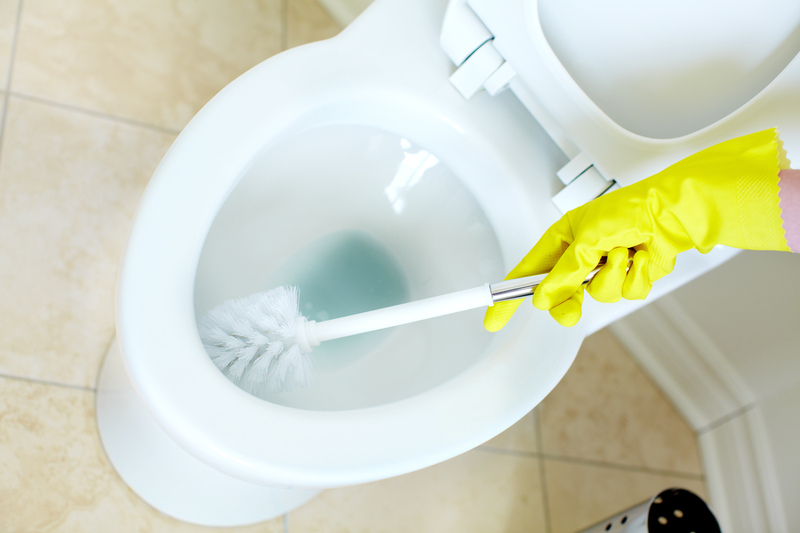Elevate Your Kitchen Routine: Remove Stovetop Burnt Residue
Posted on 19/05/2025
Elevate Your Kitchen Routine: Remove Stovetop Burnt Residue
Are you frustrated by stubborn, burnt-on residue on your stovetop? You aren't alone. Even the most diligent home cooks inevitably encounter stovetop stains, scorches, and burnt spills that refuse to budge. Let's uncover the ultimate strategies to remove stovetop burnt residue, ensuring your kitchen shines and your cooking experience is elevated. Follow this comprehensive guide and reclaim your sparkling stovetop!

Why Is It Important to Remove Stovetop Burnt Residue?
Whether you're a seasoned chef or new to cooking, keeping your kitchen clean should be a top priority. Burnt residue on stovetops doesn't just look unsightly--it can affect flavor, cause odors, and may even damage your appliance over time. By adopting the right burnt residue removal techniques, you protect your investment and preserve a healthy, inviting kitchen environment.
Negative Effects of Stovetop Burnt Residue
- Unpleasant Smells: Old food remains can emit strong, lingering odors.
- Reduced Appliance Lifespan: Caked-on burnt residue may corrode glass or metal surfaces over time.
- Health Concerns: Burnt food particles can harbor bacteria and affect food safety.
- Inefficient Cooking: A dirty surface may disrupt even heat distribution, impacting cooking performance.
Understanding Your Stovetop Type
Before removing burnt residue, it's important to identify your stovetop material. Different surfaces--such as glass, ceramic, stainless steel, or induction--require specific cleaning methods. Using the wrong technique can worsen residue build-up or damage your stovetop.
Common Stovetop Types
- Gas Stovetops: Feature removable grates and burners, usually constructed of stainless steel or enamel.
- Electric Coil Stovetops: Have exposed coils that heat directly; drip pans catch spilled food.
- Glass or Ceramic Stovetops: Offer a sleek surface that's easy to wipe but prone to scratching.
- Induction Stovetops: Similar to glass or ceramic, require careful handling.
Tip: Always consult your manufacturer's manual before using cleaning agents or tools. Some stovetops have coatings susceptible to scratching or corrosion.
Essential Supplies for Removing Burnt-on Stovetop Residue
To effectively remove burnt-on gunk from your stove, gather the right cleaning supplies:
- Baking soda: A gentle, effective abrasive for loosening stuck-on food.
- White vinegar: Breaks down tough stains and eliminates odors.
- Non-abrasive scrubber or sponge: Prevents scratching while tackling grime.
- Razor blade or scraper: Safely removes hardened residue from glass or ceramic.
- Microfiber cloth: Ensures streak-free, shiny results.
- Dish soap: Cuts through grease and cleans surfaces.
- Gloves: Protect your hands when scrubbing or using cleaning solutions.
Step-by-Step: How to Remove Burnt Residue from Your Stovetop
If you're ready to transform your sticky, grimy stove into a sparkling masterpiece, dive into these proven methods for various stovetop types.
1. For Glass and Ceramic Stovetops
-
Allow the surface to cool completely.
Never attempt to clean a hot stovetop--it could lead to burns or cracked glass. - Sprinkle baking soda generously over the burnt area.
- Soak a cleaning cloth in hot water and wring out excess. Then lay it over the baking soda for 10-20 minutes to loosen residue.
-
Gently scrub using a non-abrasive sponge or a soft-bristled brush, working in small circles.
For glass stovetops, use a razor blade at a 45-degree angle to carefully scrape off stubborn bits--avoid applying excessive pressure. - Spray white vinegar onto the surface to dissolve any remaining stains and neutralize baking soda.
- Wipe clean with a damp microfiber cloth for a glossy finish.
2. For Gas Stovetops
- Remove grates and burners. Soak them in hot, soapy water for 15-20 minutes to loosen gunk.
- Mix baking soda and water into a paste. Apply to burnt spots on the cooktop surface.
- Scrub gently with a sponge or soft brush. For tough, hard-to-reach spots, use a toothbrush.
- Clean grates and burners individually with the same paste. Stubborn stains may require a non-abrasive scrubbing pad.
- Rinse and dry thoroughly before reassembling your stovetop.
3. For Stainless Steel Stovetops
- Wipe loose debris with a dry cloth first.
- Apply a mixture of vinegar and water (50:50) and let sit for 5 minutes.
- Use a soft sponge (never steel wool) to remove burnt residues. Work with the grain of the metal.
- Rinse and buff dry with a microfiber towel to prevent streaking.
4. For Electric Coil Stovetops
- Unplug coils (if removable) and allow to cool.
- Lift out drip pans and soak in hot, soapy water.
- Scrub stubborn burnt residue from coils with a damp sponge and baking soda paste--avoid submerging coils in water.
- Clean and dry drip pans thoroughly to prevent rust.
- Reinstall coils and drip pans only when fully dry.
Natural and DIY Methods to Tackle Stovetop Burnt Residue
Many traditional cleaners contain harsh chemicals. If you prefer green cleaning options, try these effective home remedies for removing burnt-on stovetop stains:
Lemon Juice and Baking Soda
- Sprinkle baking soda directly on the residue.
- Use a cut lemon to scrub the area--the acid helps break down caked-on debris while baking soda gently scrubs.
- Wipe clean with a damp cloth.
Vinegar Steam Clean
- Fill a pot with equal parts vinegar and water.
- Boil on the stovetop for several minutes to help loosen hardened spills from the surface and surrounding area.
- Remove the pot and carefully wipe the stovetop with a soft cloth.
Prevent Burnt Residue from Building Up
Staying on top of your stovetop cleaning routine is the best way to avoid stubborn buildup. Incorporate these tips to keep your kitchen fresh and your cooking experience enjoyable:
- Wipe up spills immediately--don't let sauces, soups, or oils bake onto surfaces.
- Use stovetop covers or liners for extra protection, especially under burners.
- Clean weekly using vinegar and a microfiber cloth to maintain shine and prevent grime.
- Inspect and deep-clean burners and grates every month for best performance.
By establishing a regular cleaning schedule, you'll minimize tough scrubbing and extend your appliance's life.
Products That Help Remove Burnt Residue Easily
If homemade methods aren't enough, several commercial products are designed for remove stovetop burnt-on residue fast and safely. Consider these favorites:
- Cerama Bryte: Specifically for glass and ceramic cooktops, removes residue without scratching.
- Barkeepers Friend: Non-abrasive and versatile for stainless steel and ceramic.
- Weiman Cooktop Cleaner: Cleans and polishes electric, glass, and induction surfaces.
For safety, always follow manufacturer instructions and spot-test before use.
Frequently Asked Questions About Removing Stovetop Burnt Residue
Can I use a metal scouring pad on my glass stovetop?
No--a metal scouring pad will scratch and permanently damage the glass surface. Instead, use a specialized cooktop scraper or a non-abrasive sponge.
Is there a way to remove burnt sugar or caramel from my stovetop?
Yes! Soak the area with a hot, wet towel to soften the residue, then gently scrape with a cooktop scraper or use a mixture of baking soda and vinegar for stubborn spots.
What's the most effective way to clean stove grates?
Soak grates in hot, soapy water for 20-30 minutes, then scrub with a non-abrasive pad. For severe burnt-on residue, make a paste with baking soda and water, let it sit for 20 minutes, then rinse thoroughly.
How often should I deep-clean my stovetop?
For best results, deep-clean once a month and spot-clean after every use. Quick, regular touch-ups prevent burnt-on messes from becoming overwhelming.

Final Thoughts: Elevate Your Kitchen Routine with a Spotless Stovetop
A clean stovetop is the cornerstone of an organized, enjoyable kitchen. By learning how to remove burnt-on stovetop residue efficiently, you'll save time, prolong your appliance's life, and enhance your cooking environment.
Incorporate these professional tips, stick with gentle cleaning solutions, and adopt regular maintenance to keep your stove shining--all while elevating your kitchen routine to new heights. Say goodbye to burnt messes and hello to culinary inspiration!
Key Takeaways: The Art of Removing Burnt Stovetop Residue
- Identify your stovetop type for safe, effective cleaning.
- Use baking soda and vinegar for natural, eco-friendly stain removal.
- Never use abrasive tools on sensitive surfaces--stick to specialized scrapers or non-abrasive pads.
- Clean up spills immediately and set a regular cleaning schedule.
- Select branded cleaners for tough jobs--just follow the instructions carefully.
Elevate your kitchen routine today--remove burnt stovetop residue and enjoy a fresher, safer, and more inspiring cooking space!




